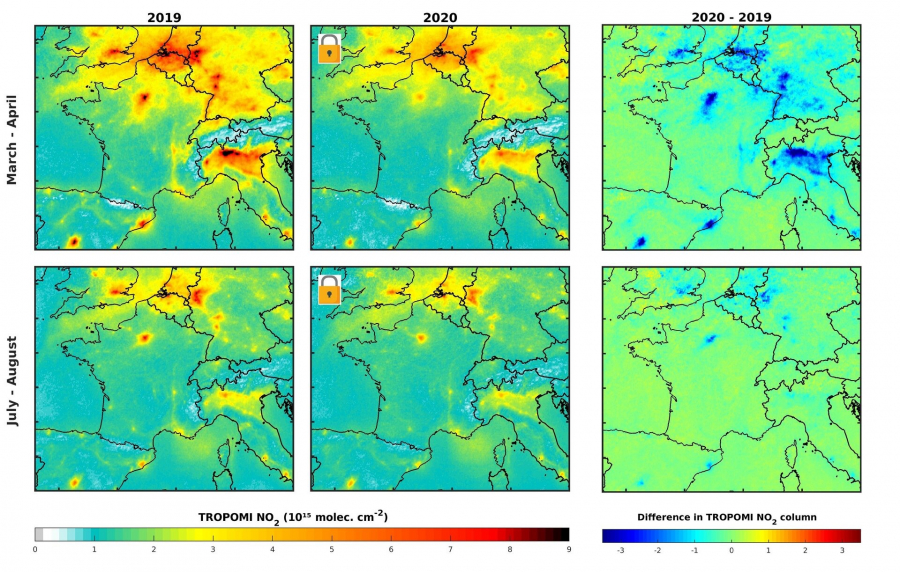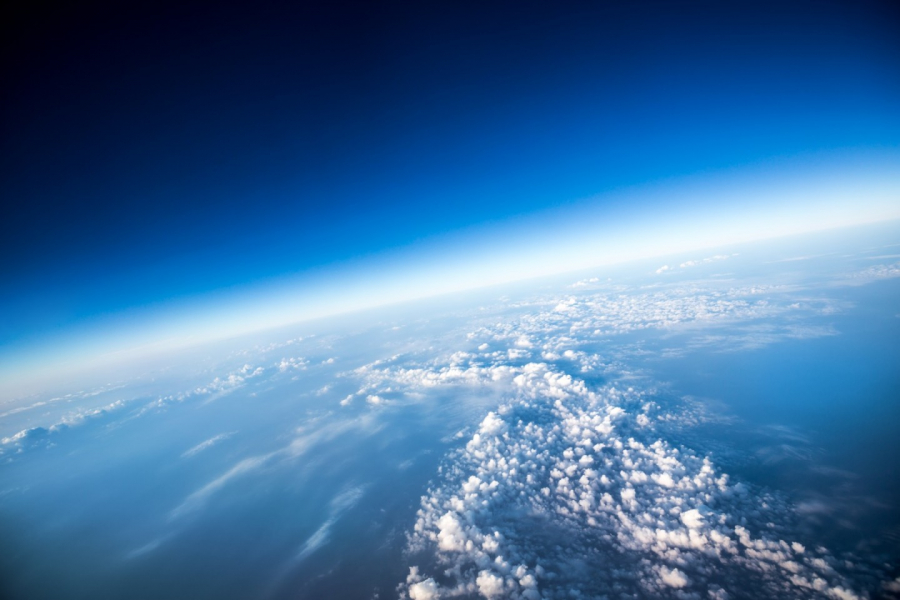NASA estimates show a 2% drop in ozone pollution in May and June 2020, largely due to reduced emissions in Asia and the US. That may not seem like much, but experts say the reduction is equivalent to at least 15 years of implementing the best practices outlined by the Intergovernmental Panel on Climate Change.
Ozone in the upper atmosphere helps shield our planet from dangerous radiation from the Sun. But in lower atmospheres, ozone can cause respiratory irritation and increase mortality from cardiovascular and respiratory diseases. Ozone is not a direct human waste, but is created when sunlight interacts with nitrogen oxide (NOx) molecules emitted from vehicles, factories, power plants, and smelters.

NO2 concentrations in Europe have dropped significantly following Covid-19 lockdowns.
Scientists have seen the social distancing campaign of the past year as an opportunity to observe what would happen to the atmosphere if human activity and emissions were drastically reduced, and from there, more effective environmental solutions could be developed.
By feeding data from multiple satellites in 2020 into four models that predict atmospheric response, NASA researchers found that NOx emissions fluctuated in magnitude with the lockdowns. Global emissions fell by at least 15% in April and May.
Countries with the most stringent lockdowns saw the biggest reductions in emissions. In China, for example, lockdowns imposed early in the year reduced emissions by up to 50%. In regions that implemented lockdowns later, such as the US, Europe, the Middle East, and West Asia, NOx emissions fell by around 18-25% in April and May.

The impact on the atmosphere was widespread and surprisingly rapid. After the quarantine, data showed a dramatic reduction in ozone globally, clearing the air up to 10 km. In the troposphere, ozone not only reduces air quality but also acts as a heat trap and increases global warming.
Scientists say the pandemic has had a positive impact on air quality and climate change. But without continued measures, the benefits may be limited. And as the world reopens, ozone levels are likely to rise, in line with rising emissions.






























